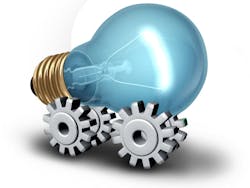The California Energy Commission (CEC) plans in late December to release a $14 million solicitation for mobile microgrids that will provide resilience during grid outages related to public safety power shutoffs (PSPS).
The commission wants to develop and demonstrate ways to increase resilience during grid outages using clean energy alternatives to mobile fossil fuel generators, according to a summary of the upcoming solicitation.
The solicitation will focus on systems that use renewable generation and energy storage. They must be mobile so they can support communities during outages.
The renewable and energy storage units will replace large mobile fossil fuel systems that now serve emergency response teams or provide power for personal electronic or medical device charging.
The state will award funds in three categories: Two in technology demonstration and deployment for systems that support small or large loads, and one in applied research and development to replace mobile fossil fuel systems that meet larger loads.
Solicitation part of $1.3B EPIC investment
The funds will come from the Electric Program Investment Charge (EPIC), which supports scientific and technological research that helps the state meet its clean energy goals.
State officials discussed the mobile microgrid solicitation during a media briefing about an EPIC symposium held this week. The symposium attracted more than 1,000 cleantech innovators, researchers and entrepreneurs to discuss emerging technologies, share best practices and make connections about projects and partnerships.
EPIC will continue for another 10 years, thanks to a recent decision by the California Public Utilities Commission (CPUC). “This shows California’s commitment to clean energy and decarbonization, it represents a $1.3 billion investment,” said Janea Scott, commission vice chair, during the media briefing.
Past EPIC investment includes $100 million in energy storage, which supported 60 demonstration projects.
During the press briefing about the symposium, CPUC Commissioner Martha Guzman-Aceves pointed to the need to replace diesel that’s backing up substations during PSPS events.
“It is very unfortunate that many of our substations are backed up with diesel,” said Guzman-Aceves. “There has been an outcry in communities, and by state leaders, including the governor’s office. We’re concerned that (use of diesel) will continue as status quo. That’s a targeted opportunity that EPIC will work on.”
But the new microgrid solicitation will not necessarily be geared solely to substations, noted Michael Ward, CEC spokesman.
Going forward, the CEC is looking at rolling in mini-microgrids during PSPS events, said CEC Vice Chair Janea Scott. The microgrid solicitation will identify potential technologies.
She noted that the EPIC program recently awarded long-duration storage awards. “We really hope that will help us find and provide realistic alternatives, more alternatives that are not running on diesel. We recognize the incredible health impacts that diesel has on communities and people.”
Guzman-Aceves expects local energy to help meet the need for resilience and sees community choice aggregators as important players who offer innovative solutions able to yield more microgrids.
A November 12 workshop will address the status of clean alternatives to diesel generation. The CEC plans to discuss the increased use of backup diesel generators as a result of wildfires and PSPS events. The workshop will also look at the increased use of large backup diesel systems for data centers and may focus on research into clean alternatives and research EPIC should consider over the next five years to find alternatives to diesel use.
EPIC Investments, image courtesy CEC
Next for energy storage in California
The state also is studying barriers to implementation of energy storage. In 2020, the CPUC convened a policy and innovation working group to help align EPIC investments with California energy policy needs, and energy storage is part of that discussion.
The working group is composed of the CPUC and the four EPIC administrators: CEC, Pacific Gas & Electric, Southern California Edison, and San Diego Gas & Electric. A key aim of the effort is to share lessons learned from EPIC research. The CPUC will focus on four state policy priorities: wildfire mitigation, transportation electrification, equity and PSPS.
For wildfires, the key focus is on technologies that can reduce or prevent wildfires from the electric system. Another goal is to minimize social and economic disruption from PSPS events.
Because battery energy storage is important to meeting California’s energy goals, the state is also studying how to extract lithium from high concentrations of the metal found in brine produced by the state’s geothermal hot spots, said Ward.
In September, Governor Gavin Newsom signed Assembly Bill 1657, which directs the CEC to convene a blue ribbon commission on lithium extraction in California, with 14 members appointed by a combination of the CEC, other state agencies, the speaker of the state assembly, and the Senate Committee on Rules.
EPIC funds 34 technologies
Meanwhile, EPIC continues to fund technologies that are commercialized. Thirty-four technologies funded through EPIC have been commercialized, and a dozen more are in the pipeline.
Right now, a major goal of such investments is to solve challenges related to fires, said CEC Chair David Hochschild.
“The fires were the story of the year,” he said during the EPIC press briefing. “The forest fires this year highlighted the need for bold solutions.”
Track news about California’s quest for mobile microgrids. Subscribe to the free Microgrid Knowledge newsletter.








